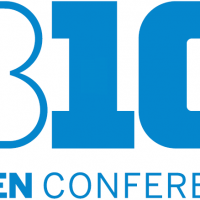
The Big Ten will welcome USC and UCLA to the conference just over two years from now. Since the news broke on June 30, there has been plenty of discussion about the two schools and how they will fit within the Big Ten. Hail Varsity reports one topic specifically has been on recruiting. Brandon Vogel looked at the potential return of the Calibraska movement in a recent recruiting notebook. Whenever you’re able to play in a state regularly, it does tend to have a benefit on the recruiting trail in the area. The same can be said for USC and UCLA who will now have a footprint in Big Ten country on the trail.
With that in mind, 247Sports recently looked at how the Trojans and Bruins stack up in recruiting rankings against future Big Ten foes. Focusing just on the 2023 class, here’s the current list (which has been updated to reflect recent commitments):
- Ohio State
- Penn State
- USC
- Northwestern
- Iowa
- Michigan State
- Purdue
- Nebraska
- Minnesota
- Michigan
- Rutgers
- MAryland
- Illinois
- Wisconsin
- UCLA
- Indiana
Lincoln Riley certainly adds some intrigue to the lineup listed above, and it makes sense that the Trojans are listed where they are. USC has the No. 11 class in the country, per 247Sports, and Riley is just reeling in the talent. As of now, the class has two five-star commitments and a four-star that’s just on the cusp of being re-rated as a 5-star.
Riley in the Big Ten will be interesting too. If he can keep USC recruiting at a high level—alongside the likes of Ohio State and Penn State—it will certainly shake things up a bit in the conference. Name, image and likeness also makes things interesting. Ohio State coach Ryan Day recently said he believes the Buckeyes need approximately $13 million to keep their roster in tact. While Day was looking at the roster as it stands once players are part of the program, there is a recruiting element involved. Players are going to see what programs like Ohio State, Alabama or USC make possible for its rosters through NIL, and that could persuade a decision one way or another.
And while the programs themselves can’t make any promises, the collectives surrounding them certainly can. Take Tennessee, for example. A five-star quarterback is reportedly going to make $8 million by playing for the Vols. Sure, Tennessee isn’t paying the quarterback $8 million dollars directly but a collective will. That’s something Riley isn’t a fan of, which he spoke up about this spring. “There was no doubt it was going to seep into recruiting at some point,” Riley said, per the Los Angeles Times. “I think anybody that cares about college football is not real pleased with that because that wasn’t the intention, we all get that. A lot of people voiced concerns when NIL came up that there had to be a plan for that, and instead we instituted NIL without any plan for that, so that’s why we’re at where we’re at. I’m sure at some point there’s going to be a market correction, if you will, with recruiting. Hopefully there will be, because in a perfect world they stay separate.”
Riley’s point is valid—and one many coaches share—but there isn’t much that can be done until sincere legislation is passed surrounding NIL. Unless rules are created and enforced, programs will continue to handle what they’re able on the recruiting trail through the likes of collectives. While Riley may not like what NIL will do to recruiting, there isn’t much he can do. Like Day, he may have to evaluate what it’ll take to keep his roster in tact once committed and signed to the team.
As for UCLA, don’t let the Bruins’ placement on the list make you think things aren’t going well. As 247Sports pointed out, UCLA’s 2023 recruiting class is small—there are only five players committed to date—and their ratings aren’t bad. It’s expected that UCLA will jump up the list once more commitments roll in. There are still two years until USC and UCLA make it official in the Big Ten, so it might be a little early to make too many assumptions about what will and will not be when the two join the conference.






